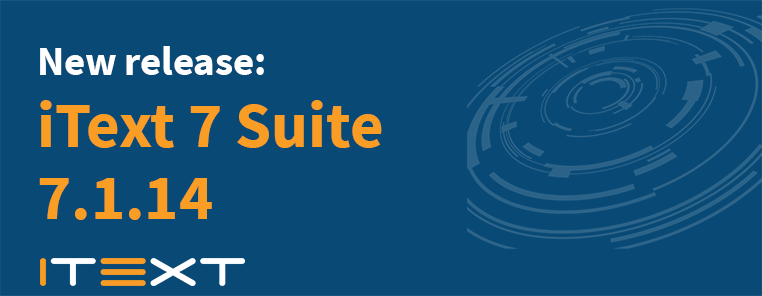
Spring is in the air in many places, and, thankfully, COVID-19 hasn’t been able to hold back the iText development team. On the contrary, even - we’ve been going ahead full steam, and, as a result, the iText 7.1.11 release brings many updates and improvements to the entire Suite!
Updates to iText 7 Core and its add-ons
Updates to iText 7 Core include more robust PNG handling, better handling of form fields, improved table splitting and other improvements.
iText pdfRender: now available for .NET and other platforms
pdfRender is our latest addition to the iText Suite, launched only this January. Since then a few bugs have been fixed, but perhaps the most interesting update here is that now also non-Java users are able to use pdfRender. As we’ve introduced a CLI (Command Line Interface) version with this release, .NET developers and others will now also be able to render images from PDFs.
iText pdfHTML: new features and new major version (3.x)
pdfHTML, one of our most popular add-ons, has received a significant overhaul with this major release. Some of the updates include:
-
Line height property support
-
Added control over widow/orphan content
-
Improved line height calculation differences between browsers and PDF rendering
-
Better creation of outlines
These are substantial improvements, so if you have already implemented pdfHTML in your project, then you may need to upgrade your existing code with this new release, due to the line height changes. You can check our proposed strategies for how to tackle this in our Release Notes.
Additional changes
This release also contains some additional features and updates for other add-ons as well. Some of the most important ones include:
-
iText pdfXFA – can now better handle lists in rich text fields,
-
iText pdfCalligraph – better support for Arabic and Khmer scripts
-
iText pdf2Data – more stable data extraction in cases of non-critical errors in PDF syntax.
Those were in a nutshell the most important improvements that come with iText 7.1.11. You can always head over to the release notes for the full details.
Licensing: remote and local volume count reporting
We know reporting your usage is not always easy. In order to make that more flexible, from this release on, our “Volume Subscription” license holders now have two options: either they can log their volume remotely, or they can use iText’s implementation of a local counter. Remote is still the most convenient way though, but users now have more options when choosing how they report their volume. For more details, you can consult the Volume Counter installation guide, and the Volume Counter FAQs.
Highlight: Pull requests
Lastly, before we end this blogpost, we’d like to give a big thanks to all the contributors, past and present, for providing new enhancements, bug fixes and ideas to the iText libraries.
Specifically, for this release, we want to give a big shoutout to the following developers:
If anyone wants to help and contribute to our code, give us a shout.
Stay safe and take care of each other!


